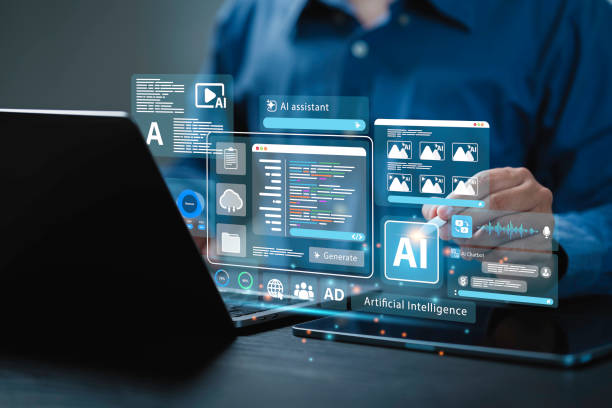What is an AI robot and how does it work?

What is an AI robot and how does it work?
#AI_Robot is a combination of two key concepts: robotics and artificial intelligence.
Robotics refers to the construction and design of physical or virtual robots capable of performing tasks automatically.
Artificial Intelligence (AI) is a branch of computer science focused on developing systems that can perform tasks typically requiring human intelligence, such as learning, reasoning, problem-solving, and natural language understanding.
Therefore, an AI robot is a robot that, using artificial intelligence algorithms, is capable of performing complex tasks and adapting to its surroundings.
For example, an AI robot can collect information from the environment using sensors, process this information using machine learning algorithms, and make decisions based on it.
This decision-making can include movement, manipulating objects, answering questions, or performing other tasks.
AI robots have various applications.
In industry, they are used for automating production processes, quality control, and material handling.
In medicine, surgical robots assist surgeons in performing complex operations with greater precision.
In customer services, chatbots answer customer questions and guide them.
Artificial intelligence is considered one of the important fields in the robotics industry.
The operation of an AI robot is based on a combination of sensors, processors, and AI algorithms.
Sensors collect information from the environment, processors process this information, and AI algorithms decide what action to take.
Machine learning algorithms allow the robot to learn from its experiences and improve its performance.
This process enables the robot to act autonomously and intelligently.
Does your company website perform as your brand deserves? In today’s competitive world, your website is your most important online tool. Rasaweb, specializing in professional corporate website design, helps you to:
✅ Build customer credibility and trust
✅ Convert website visitors into customers
⚡ Get a free consultation!
Types of AI Robots by Application and Structure
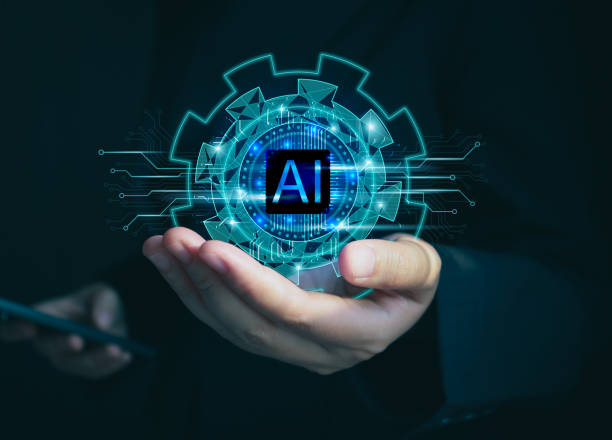
Types of AI Robots by Application and Structure
AI robots can be divided into different categories based on application and structure.
In terms of application, they can be classified into industrial robots, medical robots, service robots, military robots, and educational robots.
Industrial robots are used in factories for repetitive and dangerous tasks.
Medical robots are used in hospitals to assist surgeons and nurses.
Service robots are used in hotels, restaurants, and stores to provide services to customers.
Military robots are used on the battlefield for reconnaissance, bomb disposal, and transportation tasks.
Educational robots are used in schools and universities to teach scientific and engineering concepts.
Reviewing different types of AI robots significantly helps in better understanding this field.
In terms of structure, AI robots can be divided into stationary robots, mobile robots, humanoid robots (androids), and soft robots.
Stationary robots remain in a fixed location and perform specific tasks.
Mobile robots can move around in the environment and perform various tasks.
Humanoid robots resemble humans and can perform tasks that humans do.
Soft robots are made of soft and flexible materials and can navigate complex environments and manipulate delicate objects.
An AI robot should be designed according to its intended application.
Choosing the appropriate type of AI robot depends on the specific needs of the desired application.
For instance, for a factory requiring automation of production processes, a stationary industrial robot might be a suitable option.
Whereas for a hospital needing assistance with complex surgical operations, a humanoid medical robot could be a better choice.
Main Components of an AI Robot
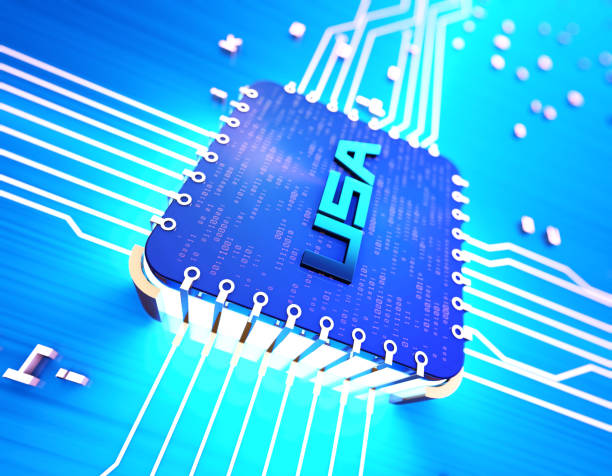
Main Components of an AI Robot
An AI robot consists of several main components: sensors, processors, actuators, power source, and software.
Sensors collect information from the environment, such as temperature, pressure, light, sound, and image.
Processors process this information and decide what action to take.
Actuators control the robot’s movement and operation, such as motors, pumps, and valves.
The power source provides the necessary energy for the robot’s operation.
Software includes AI algorithms that allow the robot to act autonomously and intelligently.
#Sensors play an important role in the performance of an AI robot.
They allow the robot to be aware of its surroundings and react to changes in it.
There are different types of sensors, each designed to detect a specific type of information.
For example, temperature sensors are used to detect temperature, pressure sensors for pressure, light sensors for light, sound sensors for sound, and image sensors for image detection.
Familiarity with robot components provides a better understanding of robot performance.
Processors are the brain of the AI robot.
They process the information collected by sensors and decide what action to take.
Processors must have sufficient processing power to execute AI algorithms.
Actuators are the robot’s hands and feet.
They control the robot’s movement and operation.
There are different types of actuators, each designed to perform a specific type of movement.
The power source is the heart of the AI robot.
It provides the necessary energy for the robot’s operation.
Software is the soul of the AI robot.
It includes AI algorithms that allow the robot to act autonomously and intelligently.
| Component | Description |
|---|---|
| Sensors | Collecting information from the environment |
| Processor | Processing information and decision-making |
| Actuators | Controlling movement and operation |
| Power Source | Supplying necessary energy |
| Software | Artificial Intelligence Algorithms |
AI Algorithms Used in Robots

AI Algorithms Used in Robots
AI algorithms play a fundamental role in the performance of AI robots.
These algorithms enable robots to perform tasks that typically require human intelligence.
Some of the most common AI algorithms used in robots include:
- Machine Learning: Machine learning enables robots to learn from data and improve their performance.
There are various types of machine learning algorithms, such as supervised learning, unsupervised learning, and reinforcement learning. - Computer Vision: Computer vision allows robots to understand images and videos.
These algorithms enable robots to detect objects, recognize faces, and interpret scenes. - Natural Language Processing: Natural language processing enables robots to understand human language and respond to it.
These algorithms allow robots to answer questions, execute commands, and communicate with humans. - Planning: Planning enables robots to plan a series of actions to achieve a goal.
These algorithms allow robots to find paths, schedule tasks, and allocate resources.
Choosing the appropriate AI robot algorithm depends on the specific needs of the desired application.
For example, for a robot that needs to detect objects in an image, a computer vision algorithm can be a suitable option.
Whereas for a robot that needs to answer customer questions, a natural language processing algorithm can be a better choice.
Combining and using multiple AI algorithms simultaneously can grant robots highly advanced capabilities.
For example, an AI robot can detect objects using computer vision, receive commands using natural language processing, and navigate a path to achieve a goal using planning.
Various types of AI algorithms contribute to the development of robotics.
Is your online sales not meeting your expectations? With Rasaweb, solve the problem of low sales and poor user experience forever!
✅ Increase visitor-to-customer conversion rate
✅ Create an enjoyable user experience and boost customer trust
⚡ Act now for a free consultation!
Advantages and Disadvantages of Using AI Robots

Advantages and Disadvantages of Using AI Robots
Using AI robots offers many advantages.
They can perform repetitive and dangerous tasks, increase productivity, improve quality, and reduce costs.
Robots can operate 24/7, without getting tired or needing rest.
They can work in hazardous environments, such as those with high temperatures, high pressure, or dangerous chemicals.
Moreover, they can perform tasks with higher precision and speed than humans, leading to improved quality and reduced errors.
However, using AI robots also has disadvantages.
They are expensive, require maintenance, and can lead to job displacement.
Robots may not be able to operate autonomously in unexpected situations and might require human intervention.
Furthermore, there are concerns regarding the security and ethical risks of using AI robots.
The decision to use an AI robot should be made by considering its advantages and disadvantages.
In some cases, the advantages may outweigh the disadvantages, while in others, the disadvantages may be greater than the advantages.
Also, the social and economic impacts of using robots must be considered, and measures should be taken to mitigate negative effects.
Applications of AI Robots in Various Industries
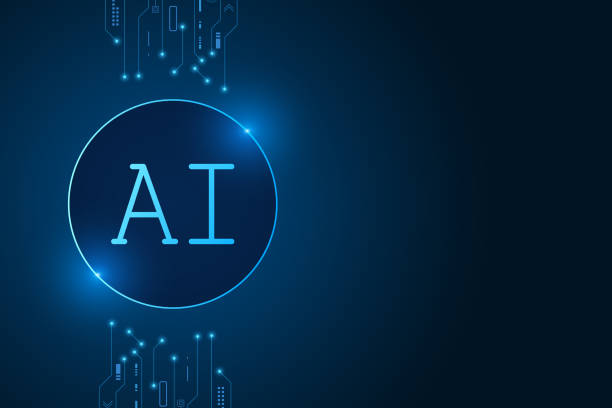
Applications of AI Robots in Various Industries
AI robots have widespread applications in various industries.
In the manufacturing industry, they are used for automating production processes, quality control, and material handling.
In the medical industry, surgical robots assist surgeons in performing complex operations with greater precision, and nurse robots help nurses care for patients.
In the customer service industry, chatbots answer customer questions and guide them.
In the agricultural industry, farming robots help farmers plant, harvest, and irrigate crops.
In addition, AI robots are also applied in the education industry.
Educational robots help students learn scientific and engineering concepts.
In the transportation industry, driverless robots help drivers to drive more safely and reduce traffic.
In the military industry, military robots assist soldiers in reconnaissance, bomb disposal, and transportation tasks.
Diverse applications of robotics in various industries have led to rapid development in this field.
The expansion of AI robot applications across various industries indicates that this technology has great potential to improve human lives and increase productivity.
However, attention must also be paid to the challenges and potential risks of using robots, and measures should be taken to manage them.
Challenges and Future of AI Robots

Challenges and Future of AI Robots
AI robots face numerous challenges.
One of the main challenges is the development of AI algorithms that can operate autonomously and intelligently in unexpected situations.
Another challenge is the development of sensors that can collect accurate and reliable information from the environment.
Furthermore, there are challenges related to the security and ethics of using robots.
Concerns exist regarding potential job displacement due to the use of AI robots.
Also, there are concerns about the security and ethical risks of using robots, such as their potential use for military or espionage purposes.
These challenges must be addressed, and measures taken to manage them.
Ethical issues in robotics are among the most significant challenges facing this industry.
| Challenge | Description |
|---|---|
| AI Algorithms | Developing autonomous and intelligent algorithms |
| Sensors | Developing accurate and reliable sensors |
| Security | Preventing the use of robots for inappropriate purposes |
| Ethics | Adhering to ethical principles in robot design and use |
Despite these challenges, the future of AI robots is very bright.
Rapid advancements in AI and robotics enable the development of robots with highly advanced capabilities.
In the future, robots will play a significant role in human lives and will be employed in various industries.
How to Choose and Use the Right AI Robot

How to Choose and Use the Right AI Robot
Choosing and using the right AI robot requires a careful assessment of your specific needs and conditions.
First, you must define your objectives for using the robot.
For example, do you intend to automate production processes, improve customer service, or help students learn scientific concepts? Then, you should research the various types of robots available in the market and select one that matches your needs.
Furthermore, you should consider the cost, reliability, ease of use, and maintenance of the robot.
Before purchasing a robot, it is advisable to consult with experts and specialists in this field and learn from others’ experiences.
After purchasing the robot, you must receive the necessary training for its proper and safe use.
Also, you should regularly maintain the robot to ensure its correct operation and longevity.
An AI robot should meet your needs.
When using an AI robot, you must also pay attention to security and ethical issues.
Do not use the robot for illegal or unethical tasks, and protect individuals’ personal information.
Moreover, you should consider the social and economic impacts of using robots and take measures to mitigate negative effects.
Proper use of robots significantly helps in improving the quality of life.
Does your current e-commerce website design not generate the sales you expect?
Rasaweb is an expert in professional e-commerce website design!
✅ An attractive and user-friendly website aimed at increasing sales
✅ High speed and security for an ideal shopping experience⚡ Get a free online store design consultation with Rasaweb!
Case Study of Successful AI Robots in Iran and Worldwide
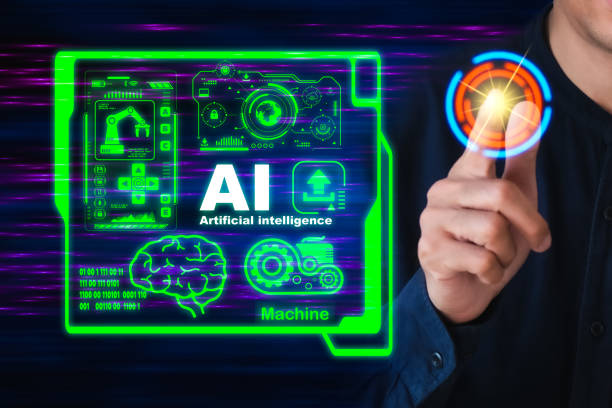
Case Study of Successful AI Robots in Iran and Worldwide
In recent years, numerous AI robots have been developed in Iran and globally, achieving significant success in various fields.
For example, many industrial robots are used in Iranian factories for automating production processes.
Also, surgical robots in Iranian hospitals assist surgeons in performing complex operations with greater precision.
Globally, numerous robots have been developed in various fields, including customer service, agriculture, transportation, and military, demonstrating excellent performance.
One successful example of an AI robot in Iran is the Surena robot, designed and built by the University of Tehran.
This humanoid robot is capable of performing complex movements, facial recognition, and speaking.
Globally, the Atlas robot, designed and built by Boston Dynamics, is one of the most advanced humanoid robots in the world.
This robot is capable of acrobatic movements, carrying loads, and moving across uneven terrain.
Examining these cases can provide a better insight into robotics capabilities.
A case study of successful AI robots can help us gain a better understanding of the potential of this technology and the challenges it faces.
It can also assist us in selecting and using appropriate robots for our needs.
Reviewing successful robots globally can aid in the development of robotics in Iran.
Resources and References for More Information on AI Robots
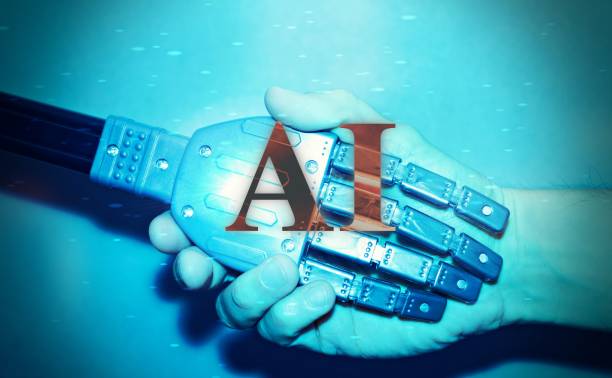
Resources and References for More Information on AI Robots
To gain more information about AI robots, you can use various sources and references.
Books, scientific articles, websites, specialized magazines, and conferences are among the resources you can utilize.
Additionally, you can consult with experts and specialists in this field and benefit from their experiences.
Websites like IEEE Robotics and Automation Society and Robotics Business Review are good sources for information on the latest news and developments in robotics.
You can also attend international robotics conferences to get acquainted with the latest achievements and technologies in this field.
In addition, numerous universities and research centers in Iran and worldwide are active in robotics, from which you can obtain information.
Studying and reviewing credible sources and references can help you gain a deeper understanding of AI robots and utilize this technology more effectively.
Remember to keep your information up-to-date and use reliable sources.
Frequently Asked Questions
| Row | Question | Answer |
|---|---|---|
| 1 | What is an AI robot? | An AI robot is a machine capable of understanding, reasoning, learning, and problem-solving, and can perform complex tasks with relative autonomy. |
| 2 | What are the most important applications of AI robots? | Primary applications include industrial manufacturing, customer services (chatbots), medicine and surgery, autonomous transportation, space exploration, and military affairs. |
| 3 | What is the main difference between an AI robot and a regular robot? | A regular robot merely follows programmed instructions, whereas an AI robot can learn from data, make decisions, and adapt itself to new environments. |
| 4 | How do AI robots learn? | They identify patterns and improve their performance through machine learning algorithms (such as deep learning, reinforcement learning) and by processing vast amounts of data. |
| 5 | Can AI robots have emotions? | Currently, AI robots do not possess real emotions in the human sense. They can imitate or detect emotions but do not understand or experience them. |
| 6 | What are the current limitations of AI robots? | Limitations include the need for large amounts of data, inability to grasp abstract concepts, lack of true creativity, ethical issues, and challenges in generalization to new environments. |
| 7 | What is the role of AI in the development of humanoid robots? | AI helps humanoid robots walk, maintain balance, perceive their surroundings, interact with humans, and perform complex tasks. |
| 8 | How is the future of AI robots predicted? | It is predicted that AI robots will become smarter, more autonomous, and capable of performing more complex tasks in daily life and industry, with increased interaction with humans. |
| 9 | Can AI robots replace all human jobs? | It is unlikely that all human jobs will be replaced. Robots will take over many repetitive and dangerous tasks, but jobs requiring creativity, empathy, and ethical judgment will remain. |
| 10 | What ethical and social challenges arise with the expansion of AI robots? | Challenges include issues related to privacy, data security, ethical decision-making by robots, impact on employment, and accountability in case of errors. |
And other advertising services by RasaWeb Advertising Agency:
Smart Social Media: A novel service for increasing digital branding through intelligent data analysis.
Smart Direct Marketing: Designed for businesses aiming to boost sales by leveraging real data.
Smart Social Media: Revolutionize website traffic with custom programming.
Smart Direct Marketing: A specialized service for enhancing user engagement based on intelligent data analysis.
Smart Customer Journey Map: An innovative platform for improving online growth by optimizing key pages.
And over a hundred other services in the field of internet advertising, advertising consulting, and organizational solutions.
Internet Advertising | Advertising Strategy | Advertorials
Resources
What is Artificial Intelligence? (Digiato)
The Impact of Artificial Intelligence on the Future of Work (Tasnim News)
Utilizing Artificial Intelligence in Industry (IRNA)
Introduction to Types of Smart Robots (Zoomit)
💡 Rasaweb Afarin is your strategic partner in the fast-paced digital world. With a targeted and professional approach, we help businesses establish a powerful and influential online presence and achieve their marketing goals.
If you are looking to grow your business and create a lasting digital identity, Rasaweb Afarin’s expert team paves your path to success by providing modern and optimized corporate website design services. For consultation and more information, please contact us.
📍 Tehran, Mirdamad Street, next to Bank Markazi, Southern Kazeroon Alley, Ramin Alley, No. 6

